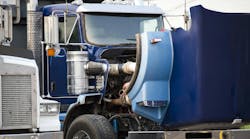Had a talk with John Vannatta, a regional vp with the American Truck Historical Society (ATHS), at a trade show recently. Formed in 1971, ATHS has 22,000 members worldwide dedicated to preserving the history of trucking. However, it's been struggling of late to come to grips with an issue affecting all antique truck owners: the ability to easily drive their vehicles across state lines. The group is looking to the trucking industry for help.
“We're seeking to develop uniform antique truck laws so our members can drive their trucks from state to state and stay legal,” Vannatta told me. “Right now, we're finding that there's no uniform set of rules governing interstate operation of antique trucks.”
Maryland, for example, recognizes any vehicle that is at least 25 years old as an antique. The state will issue antique-vehicle license plates, as long as owners don't drive them more than 2,500 miles a year.
Florida, by contrast, excludes any vehicle that is over 8,500 lb. from its “antique” designation, which means drivers must comply with all commercial vehicle regulations, including IFTA stickers, DOT numbers, CDL rules, etc.
“We're trying to develop a manual of each state's rules for antique trucks so our members can be in compliance,” he explained. “Then we'll try to [get the] most onerous rules modified.”
Vannatta said the ideal would be to develop a national classification and status for antique trucks, similar to what operators of RVs enjoy. “They don't have to stop at weigh stations; they don't need a CDL or an IFTA sticker to operate on the highway,” he pointed out. “We'd like to try and develop a similar subsection of DOT laws for antique truck owners.” ATHS classifies a truck as “antique” if it's 25 years or older.
In this time of rising diesel prices and terrorism threats, the legal status of antique trucks may seem like something well down the list of major trucking concerns.
Yet it's dedicated people like those at ATHS that are preserving the history of trucking in this country. I've been to the Transportation Hall of the American History Museum, run by the Smithsonian here in Washington, D.C., many times and I can tell you that trucking to this day continues to get very short shrift in the nation's memory bank. Trains, cars, and agricultural equipment all have a much larger presence at the Smithsonian complex. In fact, there's only one commercial vehicle in the exhibit — the first Freightliner interstate cabover.
Part of what ATHS does is spotlight the everyday contribution trucks have made to the American way of life, from fire and rescue vehicles to towing and recovery trucks, freight haulers, and military re-supply vehicles.
And antique trucks and their owners represent something far different when compared to the “classic car” movement in America. For example, I talked with Henry Fowler Jr., president of ATHS's Baltimore-Washington Chapter and a volunteer firefighter from Maryland's eastern shore.
One of the vehicle's he shows off is a 1940s-era fire truck that only recently was retired from service. Trucks are one of the few forms of transportation that continue to be put to work even after they've entered antique status.
“We found the original bill of sale for our fire truck; it was just over $14,000,” said Fowler. “Amortize that over 60 years and I think you'll find our department got quite a bargain.”
That's why I think helping antique truck owners preserve and promote trucking's history is important. They at least deserve to be considered for a separate vehicle classification.


